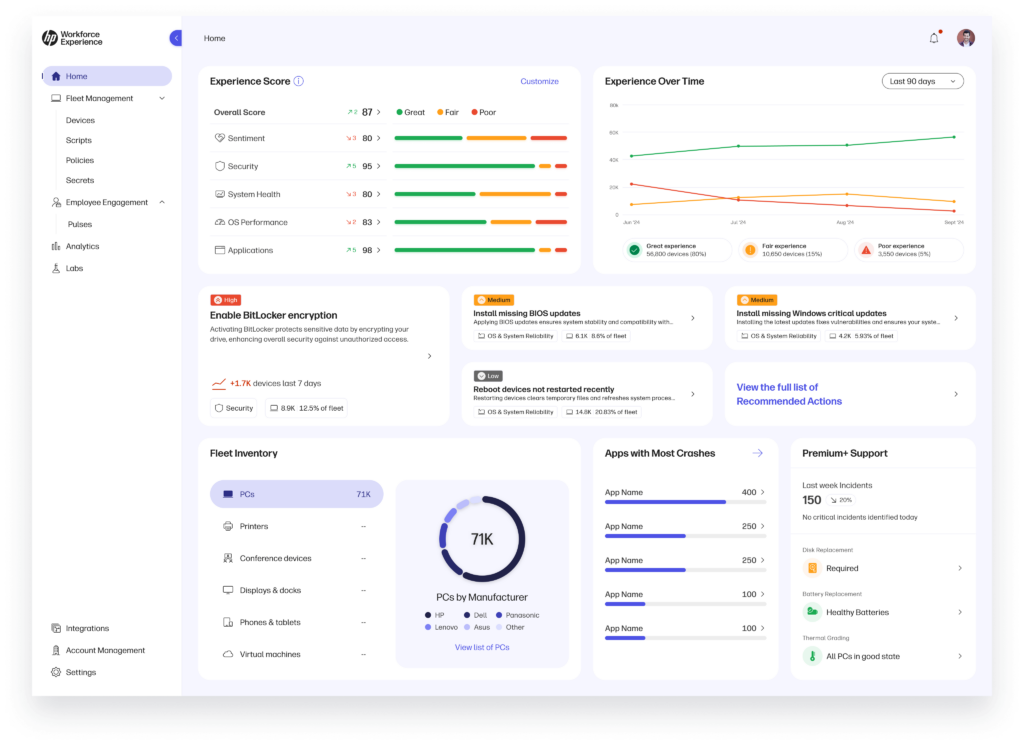VDI Software Considerations
IT experts share how managed VDI services simplify operations, why single-vendor stacks enhance security, and where VDI expands beyond typical use cases.
Virtual desktop infrastructure (VDI) is a key component for enabling remote access, improving manageability, and scaling secure user environments. But selecting the right VDI software and supporting tools can be complex. Below, three IT experts outline strategic considerations that can help organizations choose VDI solutions that meet both current demands and future growth.
Consider a managed VDI solution
Organizations looking to streamline the complexity of virtual desktop environments are increasingly turning to managed VDI services. These solutions reduce the IT burden while improving security and scalability. According to HP and World Wide Technology, organizations such as leading aerospace firms have been able to move from a simpler VDI implementation to a more robust remote desktop computing implementation using hybrid architectures and high-fidelity simulation support.
“Deploying, managing, and scaling remote workstations and virtual desktops just got easier with HP Anyware Manager Enterprise. All services are hosted and maintained by HP, reducing the need for on-premise infrastructure; the integration with VMware using the Anyware Conductor allows for seamless management of virtual environments; and the Trusted Local Agent License feature ensures that only trusted agents can connect to your network, enhancing security.”
Ross Riley
Software Services Specialist @ HPSource: LinkedIn
Managed VDI software not only accelerates deployment but also strengthens control across distributed teams. For IT leaders seeking centralized visibility with minimal infrastructure overhead, managed platforms can serve as an ideal starting point before transitioning to deeper integrations or specialized configurations.
Consider VDI software and hardware from a single vendor
Choosing VDI solutions from a single vendor stack offers significant advantages, including performance optimization, simplified support, and tighter security. HP Anyware, for example, integrates seamlessly with HPE ProLiant hardware and Nutanix Cloud Platform to create a complete virtual desktop infrastructure (VDI) solution designed for modern workforces.
“The combination of HPE ProLiant DX365 Gen11 servers, HP Anyware, and Nutanix Cloud Platform creates a joint solution that exemplifies the synergy between advanced computing power, secure remote access, and cloud agility. This cohesive approach delivers enhanced data security, operational efficiency, and the flexibility required by today’s distributed workforce.”
Phil Cutrone
Senior Vice President & GM, Service Providers, Telco, OEM @ HP EnterpriseSource: HP Anyware Achieves Nutanix Ready Validation for Desktop Virtualization
Consider VDI for use cases outside the ordinary
VDI software is often associated with traditional enterprise use, but forward-thinking organizations are discovering value in more unconventional settings. For example, a virtual desktop infrastructure upgrade cut response times by 60% for first responders in Amarillo, Texas, enabling faster, more secure communication and resource access across locations.
“With VDI, we moved employees into various conference rooms without moving their physical machines. This allowed some departments to realize the value of the flexibility of VDI, both on-premises and off. We were able to modernize our desktop world in more ways than we initially thought. We started by replacing some of our traditional desktops with VDI but quickly discovered that we could be far more innovative with the technology.”
Missy Laird
Amarillo Director of ITSource: StateTech Magazine
From mobile field operations to temporary workspaces and hybrid deployments, VDI solutions offer a level of flexibility that fixed hardware cannot. Organizations that explore less conventional applications of VDI are often the ones that discover the full strategic potential of virtualization technology.
In conclusion, the right VDI software can simplify IT operations, enhance user flexibility, and expand secure access in ways that static infrastructure cannot. By considering managed solutions, unified vendor ecosystems, and creative applications, organizations can better align their virtual desktop strategies with both day-to-day operations and long-term digital transformation goals.









